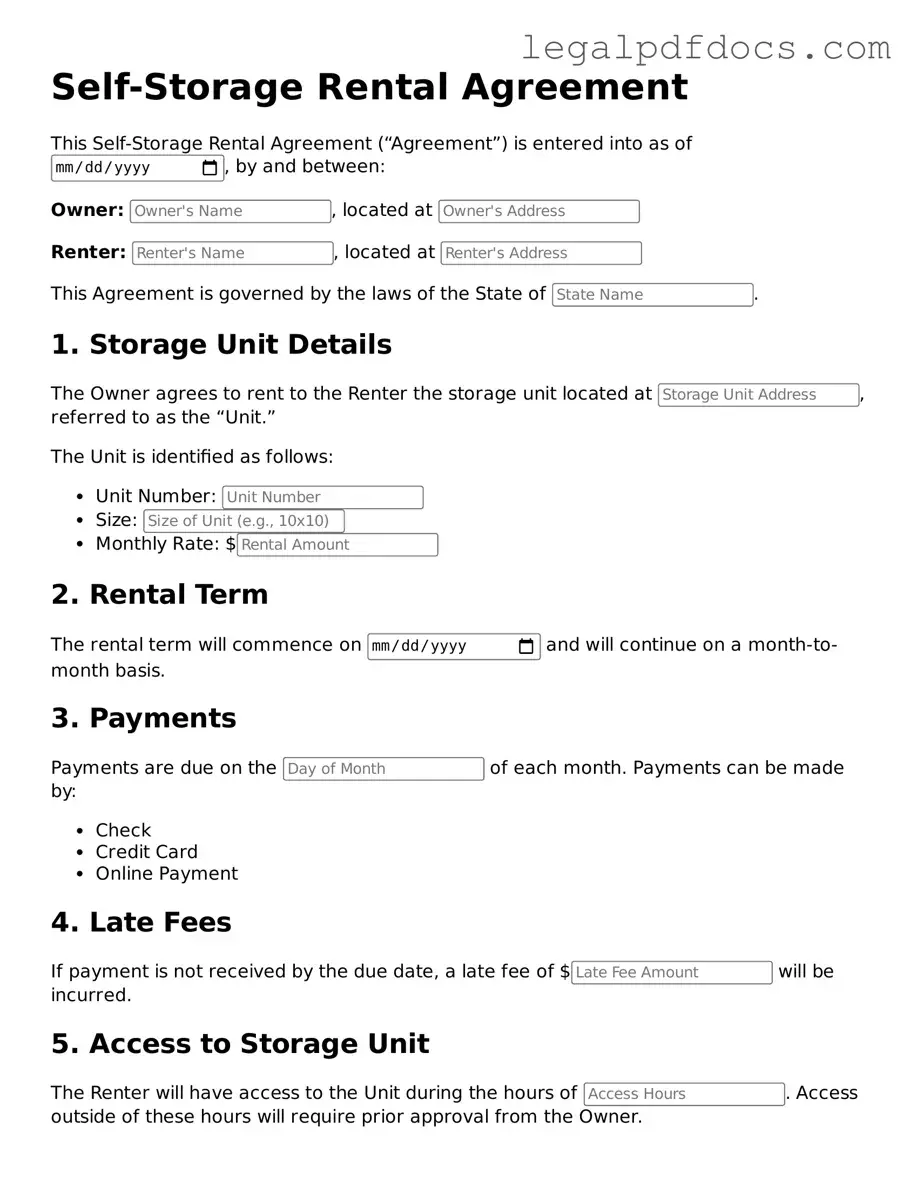Self-Storage Rental Agreement Template
The Self-Storage Rental Agreement form is a legal document that outlines the terms and conditions between a storage facility and a renter. This agreement ensures both parties understand their rights and responsibilities regarding the use of the storage unit. To get started, fill out the form by clicking the button below.
Open Self-Storage Rental Agreement Editor Here
